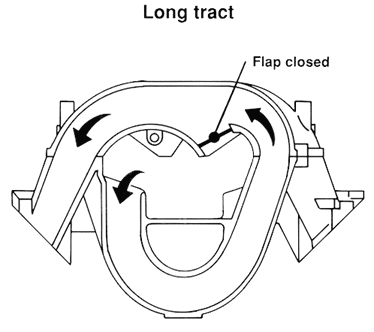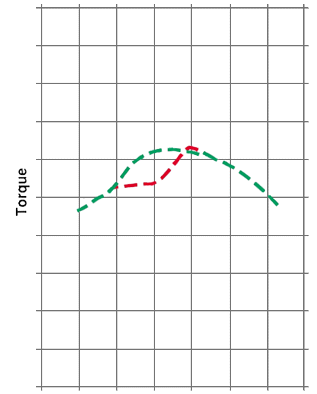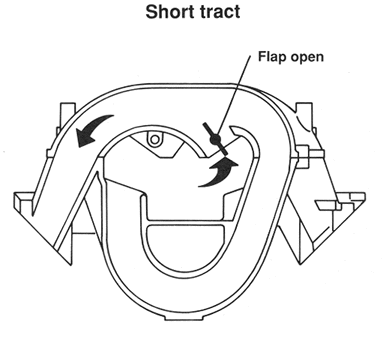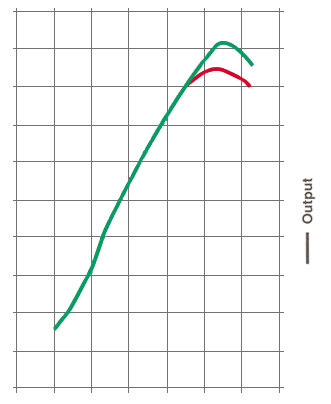
Intake Manifold
The 12v engine uses a multi-path intake manifold. The benefits of this manifold are improved
torque at low engine speeds and increased power at high rpms.
 The multi-path intake manifold has six flaps that are opened and closed by a vacuum servo. The servo is electronically activated by the ECU. Since vacuum pressure decreases at higher engine speeds, the 12v engine was originally fitted with a camshaft-driven vacuum pump to provide the necessary vacuum for proper operation of the vacuum servo. The vacuum pump was dropped in early 1992 in favor of a vacuum reservoir, located in front of the engine next to the power steering pump. The six flaps operate according to engine speed. They are closed up to 4100 rpm for maximum torque, and are opened completely above 4100 rpm for higher power output. Engine speed is the only factor affecting the opening and closing of the flaps. Each cylinder has two intake tracts with different lengths and diameters. The low rpm intake tracts are 780mm long and have the smaller diameter of the two different tracts. These are selected at low engine speeds when the six flaps are closed. The high rpm intake tracts are 380mm long and have a larger diameter. |
||
 |
 |
|
 |
 |
|
|
|